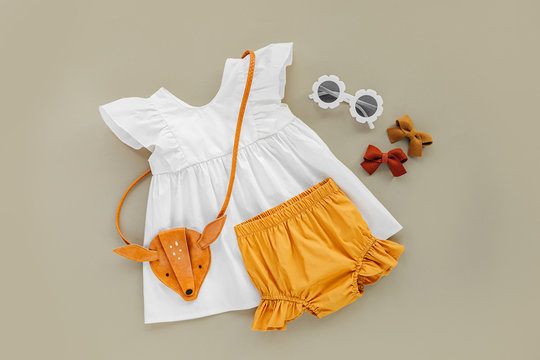Kids Clothes: A Complete Guide for Parents
Introduction
Clothing is more than just fabric stitched together—it is an expression of style, comfort, and personality. When it comes to kids, choosing the right clothes becomes even more important. Parents want their children to look adorable, feel comfortable, and stay safe in their outfits. The world of kids clothes is constantly evolving, influenced by fashion trends, cultural traditions, and practical needs. This article explores the essentials of kids’ clothing, the importance of comfort, the latest trends, and helpful tips for parents to make the right choices.
Importance of Kids Clothes
Clothes are not just about covering the body; they play a vital role in children’s development. Proper kids’ clothes provide:
- Comfort – Soft fabrics and breathable materials allow kids to move freely.
- Protection – Clothes safeguard against weather, dust, and harmful UV rays.
- Confidence – When children wear clothes they like, they feel more confident.
- Identity – Clothes often reflect culture, family traditions, or even personal preferences.
For parents, the right clothing choices mean fewer tantrums, better hygiene, and long-lasting durability.
Factors to Consider When Buying Kids Clothes
1. Fabric Quality
Children have sensitive skin, so choosing fabrics like cotton, linen, or organic blends is essential. These materials are breathable, soft, and less likely to cause irritation.
2. Size and Fit
Kids grow quickly, and ill-fitting clothes can cause discomfort. Parents should avoid buying extremely tight outfits and instead opt for slightly larger sizes that give room for growth.
3. Seasonal Needs
Clothing should match the weather. Light cotton is best for summer, while wool or fleece works for winter. Raincoats, jackets, and thermal wear are must-haves for seasonal changes.
4. Durability
Children are playful and often rough on their clothes. Sturdy stitching and high-quality fabric ensure the outfit lasts longer.
5. Safety Features
Avoid clothes with sharp zippers, loose buttons, or dangling accessories that can pose choking hazards.
Popular Types of Kids Clothes
1. Casual Wear
Casual outfits like t-shirts, jeans, shorts, and leggings are perfect for everyday wear. They are easy to wash and provide maximum comfort.
2. Formal Wear
Special occasions such as weddings, birthdays, or family gatherings call for stylish outfits. Suits, gowns, frocks, and sherwanis give kids a polished look while still being child-friendly.
3. Sleepwear
Soft pajamas, rompers, and night suits made of breathable cotton ensure a good night’s sleep. Safety is crucial here—snug fits are often recommended for toddlers.
4. Sportswear
Active kids need flexible clothes like tracksuits, shorts, and breathable tops. Sportswear allows free movement and often comes in sweat-absorbent materials.
5. Traditional Wear
Cultural clothing is a beautiful way to connect children with their heritage. Whether it’s shalwar kameez, kurta pajamas, or ethnic frocks, traditional outfits have a timeless charm.
Latest Trends in Kids Fashion
Children’s fashion has grown into a booming industry, influenced by social media and global fashion houses. Some popular trends include:
- Sustainable Clothing – Eco-friendly fabrics and organic cotton are gaining popularity among parents who want safe and green fashion for their kids.
- Cartoon-Themed Outfits – Clothes featuring popular characters like Spiderman, Elsa, or Peppa Pig remain favorites among younger children.
- Matching Sets – Coordinated outfits, such as matching tops and bottoms, are stylish and easy to wear.
- Gender-Neutral Clothing – More brands are introducing neutral colors and designs that work for both boys and girls.
- Mini-Me Fashion – Parents love dressing their kids in outfits that mirror adult trends, from denim jackets to sneakers.
Tips for Parents When Shopping for Kids Clothes
- Prioritize Comfort Over Style
While trendy outfits are attractive, kids should always feel comfortable. Scratchy fabrics or tight fits can irritate them. - Buy a Mix of Basics and Stylish Pieces
Every wardrobe needs basics like plain t-shirts and trousers, along with a few statement outfits for special occasions. - Keep Budget in Mind
Children outgrow clothes quickly, so spending wisely is important. Look for discounts, sales, or value packs. - Check for Easy Maintenance
Choose machine-washable fabrics and avoid clothes that require dry cleaning. Stain-resistant materials are also useful. - Involve Kids in the Selection
Older children love choosing their clothes. Involving them in the process helps them feel more independent and confident.
Benefits of Choosing the Right Kids Clothes
- Better Hygiene: Clean, well-fitted clothes reduce the chances of rashes and infections.
- Enhanced Confidence: Kids feel happy and active when they like what they kids wear.
- Long-Term Savings: Durable clothing reduces frequent replacements.
- Cultural Connection: Traditional outfits keep children connected to heritage.
The Role of Online Shopping in Kids Fashion
The rise of e-commerce has transformed the way parents shop for kids’ clothes. Online stores offer:
- Convenience – Parents can shop anytime without visiting crowded malls.
- Variety – Access to thousands of styles, sizes, and brands.
- Price Comparisons – Easy to compare prices and find the best deals.
- Doorstep Delivery – Saves time and effort, especially for busy parents.
However, parents should carefully check size charts, customer reviews, and return policies before purchasing.
Conclusion
Kids’ clothes are more than just garments—they are a combination of comfort, safety, and style. From casual wear to festive outfits, every choice matters in shaping a child’s personality and ensuring their well-being. With growing fashion trends, eco-friendly options, and online shopping facilities, parents today have countless choices at their fingertips. By keeping comfort, quality, and practicality in mind, they can build a wardrobe that not only looks stylish but also makes their little ones feel happy and confident every day.



